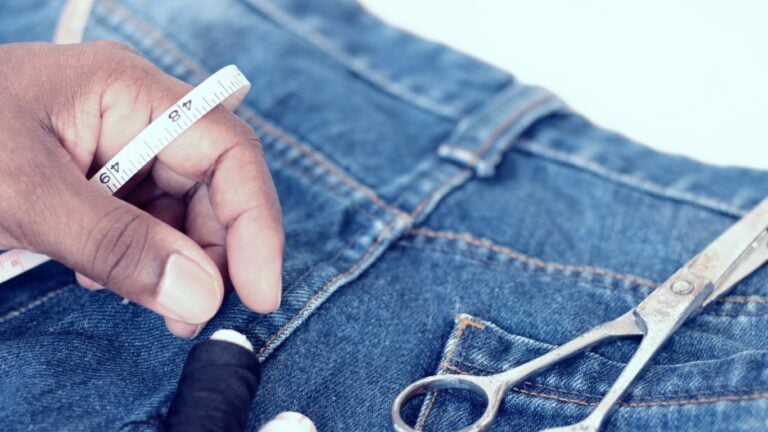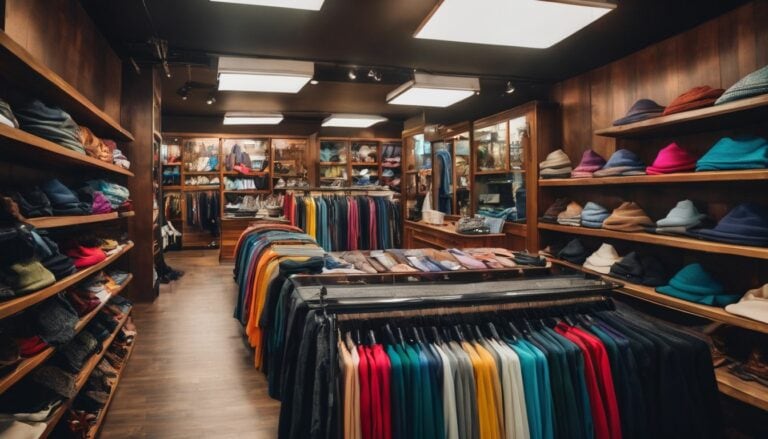Elastane Vs Spandex: For A Sustainable Stretch?
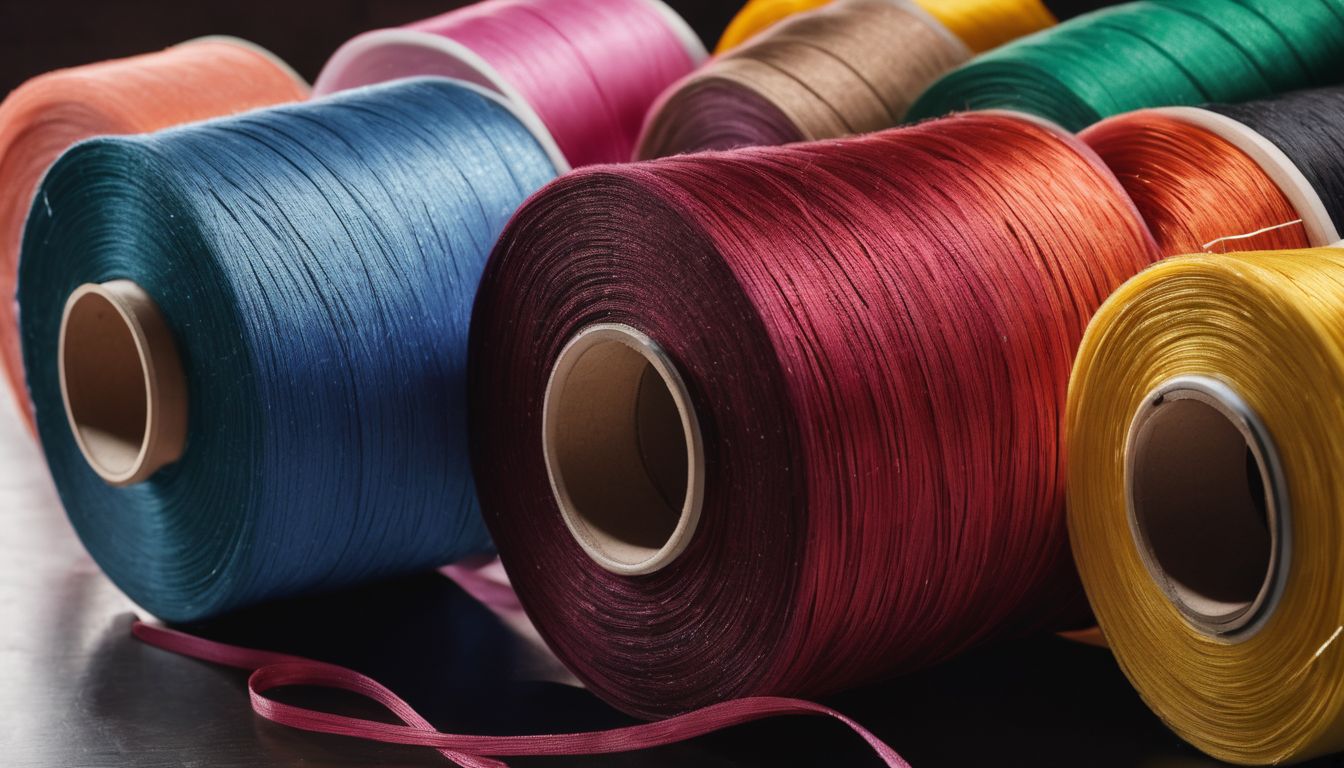
Navigating the world of textiles can be tricky, especially when considering sustainability. Did you know that Elastane and Spandex are interchangeable terms for the same synthetic fiber? This article will shed light on these materials, their environmental impact, and alternatives for sustainable stretch fabrics.
Let’s unravel this tightly woven mystery together!
Key Takeaways
- Elastane and spandex are interchangeable terms for the same synthetic fiber known for its exceptional stretch and recovery capabilities.
- Both elastane and spandex are non – biodegradable synthetic materials, which raises sustainability concerns.
- Sustainable alternatives to elastane and spandex include using natural fibers with inherent stretch properties like organic cotton or bamboo, recycling spandex fabrics, and adopting eco-friendly manufacturing processes.
- Creative upcycling, donation centers, and thrift shops can provide sustainable disposal options for elastane and spandex products.
What are Elastane and Spandex?
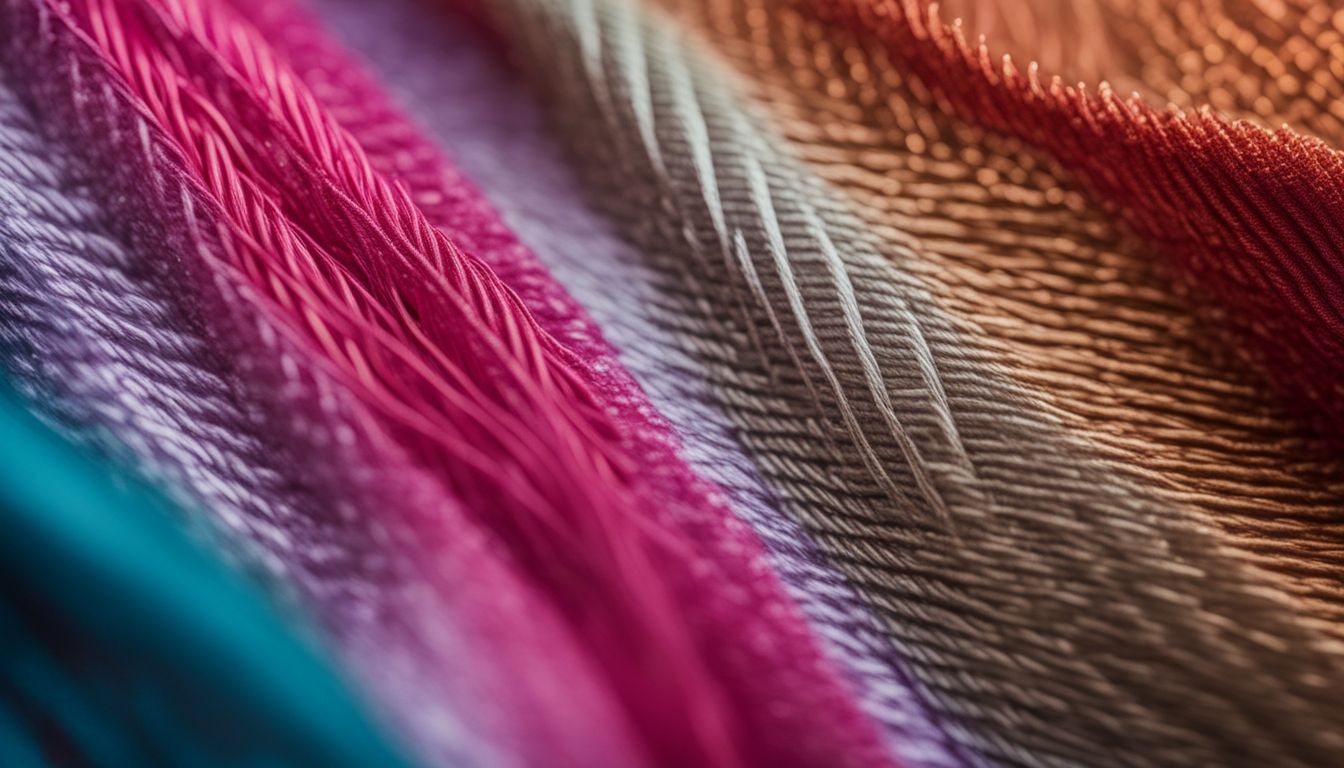
Definition and differences

While Elastane and Spandex are essentially the same synthetic fiber, they are known by different names across the globe. In general, their characteristics and applications overlap significantly.
| Elastane | Spandex | |
|---|---|---|
| Definition | Elastane is a synthetic fiber known for its exceptional elasticity. It can expand up to 500 to 610 percent, making it incredibly stretchy. | Spandex is a synthetic fabric that is prized for its elasticity. It can stretch up to five times its original length without breaking. |
| Usage | Elastane is commonly used in a variety of clothing items such as stretch jeans, socks, and yoga pants. | Spandex, while also used in clothing, works particularly well when mixed with sustainable natural fibers. |
| Sustainability | Being a synthetic material, elastane is non-biodegradable which leads to considerable sustainability concerns. | As with elastane, spandex is also non-biodegradable, increasing the urgency in the search for natural alternatives. |
| Origin | The term ‘elastane’ is more commonly used in Europe and rest of the world. | The term ‘spandex’ is predominantly used in the United States, coined from an anagram of the word ‘expands’. |
Manufacturing process

Making elastane and spandex needs a few steps. First, the raw materials get changed into prepolymers. These look like thick syrup. They are heated and react to form long polymer chains.
The chains get dried to make chips or pellets.
Next, the chips melt down to form a liquid. This is forced through tiny holes in a process called spinning. When it hits cold air or water, it turns into thin strings of fiber.
The fiber then goes through heat processing for added strength. It also helps the fiber stretch better and snap back quickly when let go.
In short, this process uses heat plus chemical reactions to turn simple parts into complex ones!
Key characteristics

Elastane and spandex show unique traits that set them apart.
- These fibers are known for being very stretchy. They can grow up to five times their size without breaking.
- This quality makes elastane a top pick for making stretch jeans, socks, and yoga pants.
- Spandex mixes well with natural fibers that are good for the earth.
- You will find elastane in most clothes that need to hold their shape. The exceptional elasticity keeps clothes fitting just right.
- But, these synthetic fibers do come with a big problem. They are not kind to our planet. Elastane cannot break down in nature which hurts its score on the sustainability scale.
Synthetic Fabrics: An Environmental Fashion Faux Pas?

These fabrics are entirely synthetic, meaning they do not exist naturally and are made from nonrenewable resources such as petrochemicals. This production process contributes to greenhouse gas emissions and depletes finite resources.
Additionally, elastane is non-biodegradable, which means it doesn’t break down easily in the environment, leading to long-lasting waste.
When considering the sustainability of our clothing choices, it’s essential to recognize the impact of synthetic fabrics like elastane and spandex. While they offer convenience and functionality in our garments, their manufacturing processes contribute to environmental degradation.
As consumers, we can make more conscious choices by seeking out eco-friendly alternatives that minimize our reliance on these synthetic fibers. By opting for sustainable textiles made from natural or recycled materials instead of elastane and spandex, we can support a more environmentally friendly fashion industry while still enjoying comfortable stretch fabric options.
Remember: Synthetic fabrics may provide temporary benefits in terms of comfort and performance but prioritize sustainability by choosing natural alternatives or exploring recycled options when looking for stretchy materials for your clothing needs.
Environmental Impacts of Elastane and Spandex Production

Elastane and spandex production have significant environmental impacts, from non-biodegradability to synthetic material waste. Read on to learn more about the sustainability challenges these stretch fabrics present.
Non-biodegradability
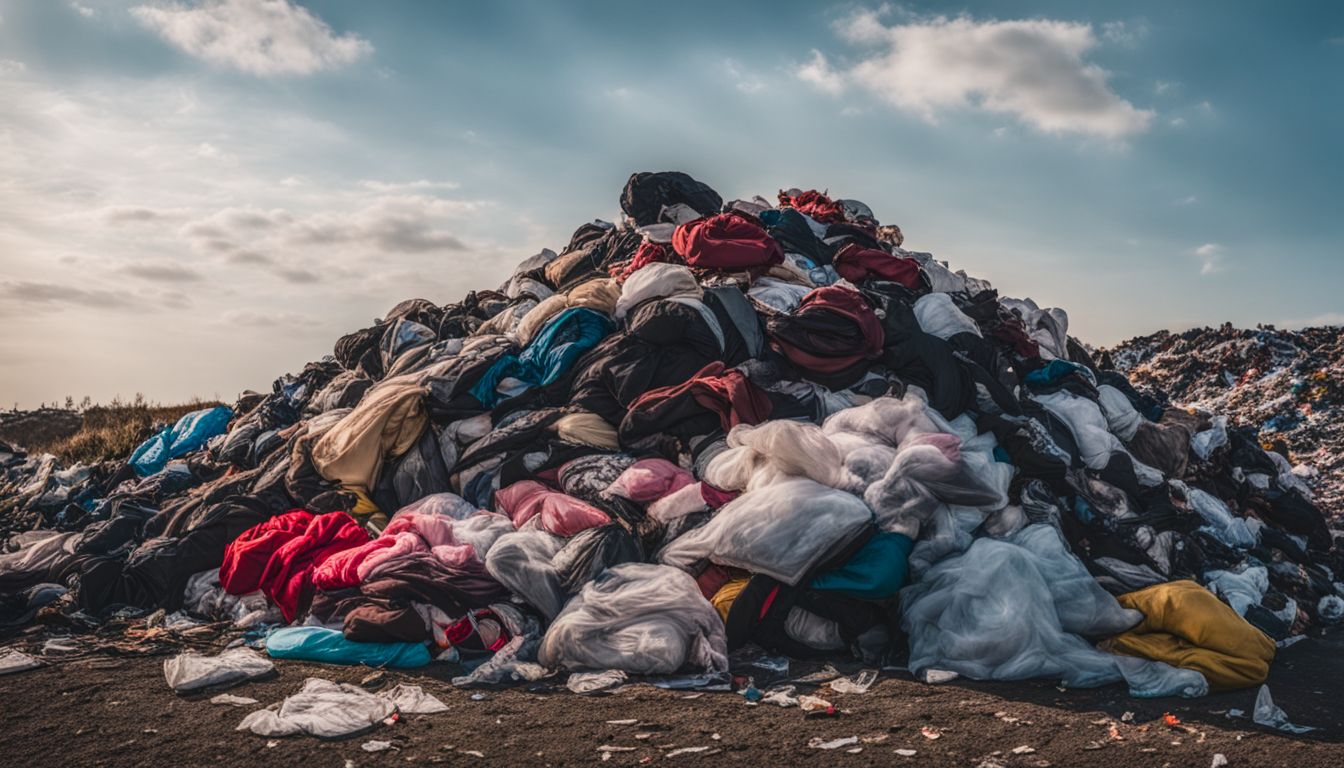
Elastane and spandex, also known as synthetic fibers, are widely used in clothing because of their stretchiness. However, one concerning aspect of these materials is their non-biodegradability.
Unlike natural materials like cotton or wool that can break down naturally over time, elastane and spandex do not decompose easily. This means that when we throw away clothes made with these fabrics, they end up sitting in landfills for a long time without breaking down.
As a result, the accumulation of non-biodegradable materials like elastane and spandex contributes to environmental pollution and waste issues. It’s important to consider more sustainable alternatives to reduce our reliance on such fabrics and minimize their negative impact on the environment.
Synthetic material waste

Elastane and spandex, being entirely synthetic fabrics, contribute to the problem of synthetic material waste. These fibers do not biodegrade naturally, meaning they can linger in landfills for hundreds of years.
With the growing popularity of stretchy clothing items like leggings and yoga pants, the amount of elastane and spandex waste is increasing. The non-biodegradable nature of these materials poses a sustainability concern as it adds to our already overflowing landfills.
This issue highlights the need for more eco-friendly alternatives that can provide stretch without contributing to synthetic material waste.
Eco-Friendly Alternatives to Elastane and Spandex

Explore sustainable resources and practices, recycled spandex fabrics, and natural stretch alternatives that offer a greener choice for your clothing. Don’t miss out on discovering environmentally friendly options to replace elastane and spandex in your wardrobe!
Sustainable resources and practices

Sustainable resources and practices are important in the fashion industry to reduce the environmental impact of elastane and spandex production. Here are some eco-friendly alternatives that can be used:
- Using sustainable resources, such as organic cotton or bamboo, to create stretch fabrics.
- Adopting environmentally friendly manufacturing processes that minimize water and energy consumption.
- Recycling spandex fabrics to create new garments instead of producing more synthetic material.
- Exploring natural alternatives to elastane and spandex, such as plant-based fibers like Tencel or Modal.
- Encouraging the use of biodegradable materials in clothing, reducing waste and pollution.
Recycled spandex fabrics

Recycled spandex fabrics are an eco-friendly alternative to traditional elastane and spandex materials. These fabrics are made by reusing and repurposing waste spandex fibers, reducing the amount of synthetic material that ends up in landfills or incinerators.
By recycling spandex, we can help minimize the environmental impact of its production and disposal.
One important fact about recycled spandex fabrics is that they still maintain their stretchiness and elasticity, making them a great choice for clothing items that require a high degree of flexibility.
This means that you can still enjoy comfortable and form-fitting clothes while being mindful of sustainability.
Recycling spandex also contributes to a circular economy where resources are reused instead of discarded. By supporting brands that use recycled spandex fabrics, we can encourage more sustainable practices in the fashion industry.
Natural stretch without elastane

Natural stretch fabrics provide an alternative to elastane and spandex that is more sustainable. These fabrics use natural fibers with inherent stretch properties, eliminating the need for synthetic materials.
For example, organic cotton is known for its flexibility and can be used to create comfortable and stretchy clothing items without the use of elastane. Bamboo fabric also offers a natural stretch due to the fiber’s construction.
The benefit of these natural alternatives is that they are biodegradable and have a lower environmental impact compared to synthetic fibers like elastane or spandex. So, by choosing fabrics with natural stretch capabilities, you can contribute to a more sustainable fashion industry without compromising on comfort or style.
Sustainable Disposal of Elastane and Spandex Products

Creative upcycling, donation centers and thrift shops, and brand take-back programs are all options for sustainable disposal of elastane and spandex products.
Creative upcycling

Creative upcycling is a sustainable way to dispose of elastane and spandex products. Instead of throwing them away, you can give them new life by repurposing them into something useful and unique. Here are some creative upcycling ideas:
- Turn old elastane or spandex clothing into hair ties or headbands.
- Cut out small pieces and use them as patches for jeans or other garments.
- Transform old leggings or tights into arm warmers or leg warmers.
- Use the fabric to make reusable produce bags or tote bags.
- Create a braided rug by cutting the fabric into strips and braiding them together.
- Make wristbands or scrunchies from leftover pieces of elastane or spandex.
Donation centers and thrift shops

Donation centers and thrift shops offer sustainable solutions for disposing of elastane and spandex products. Here are some ways they contribute to a more eco-friendly fashion industry:
- Donating unwanted items: Instead of throwing away clothes made with elastane or spandex, consider donating them to local donation centers. This gives the garments a second life and reduces waste.
- Shopping at thrift shops: By purchasing pre-loved clothing from thrift shops, you help reduce the demand for new elastane and spandex products. This promotes circularity in the fashion industry.
- Extending the lifespan: When you donate or shop at thrift shops, you give these garments an opportunity to be used longer, reducing the need for new production.
- Supporting charitable causes: Many donation centers and thrift shops support charitable organizations through their sales. By participating in these initiatives, you contribute to a more sustainable and socially responsible fashion industry.
Brand take-back programs

Some brands have introduced take-back programs as a way to promote sustainable disposal of elastane and spandex products. These programs encourage customers to return their old or unwanted clothing items made from these materials, rather than throwing them away.
Through these initiatives, brands can collect the used garments and either recycle them into new products or find other creative ways to upcycle them. By participating in brand take-back programs, consumers can contribute to reducing textile waste and ensure that elastane and spandex products are disposed of in an environmentally friendly manner.
Conclusion: Evaluating the Sustainability of Elastane and Spandex

In evaluating the sustainability of elastane and spandex, it is crucial to consider their environmental impacts. Both materials are non-biodegradable and can contribute to synthetic material waste.
However, there are eco-friendly alternatives available, such as recycled spandex fabrics and natural stretch without elastane. By choosing sustainable disposal options like upcycling or utilizing brand take-back programs, we can reduce the negative effects associated with these synthetic fibers and work towards a more sustainable fashion industry.
FAQs
1. What is the difference between elastane and spandex?
Elastane and spandex are actually the same thing – a synthetic fiber known for its stretchiness and elasticity.
2. Are elastane/spandex fabrics sustainable?
Elastane or spandex fabrics themselves are not considered sustainable as they are derived from non-renewable resources and can take a long time to break down in landfills.
3. Are there any eco-friendly alternatives to elastane/spandex?
Yes, there are eco-friendly alternatives to elastane/spandex, such as recycled polyester or natural fibers like organic cotton or bamboo which offer some stretchability without being harmful to the environment.
4. Can elastane/spandex be recycled?
Recycling facilities for elastane/spandex fabric are still limited, but efforts are being made to develop technologies that can recycle these materials more efficiently in order to reduce waste and promote sustainability.





